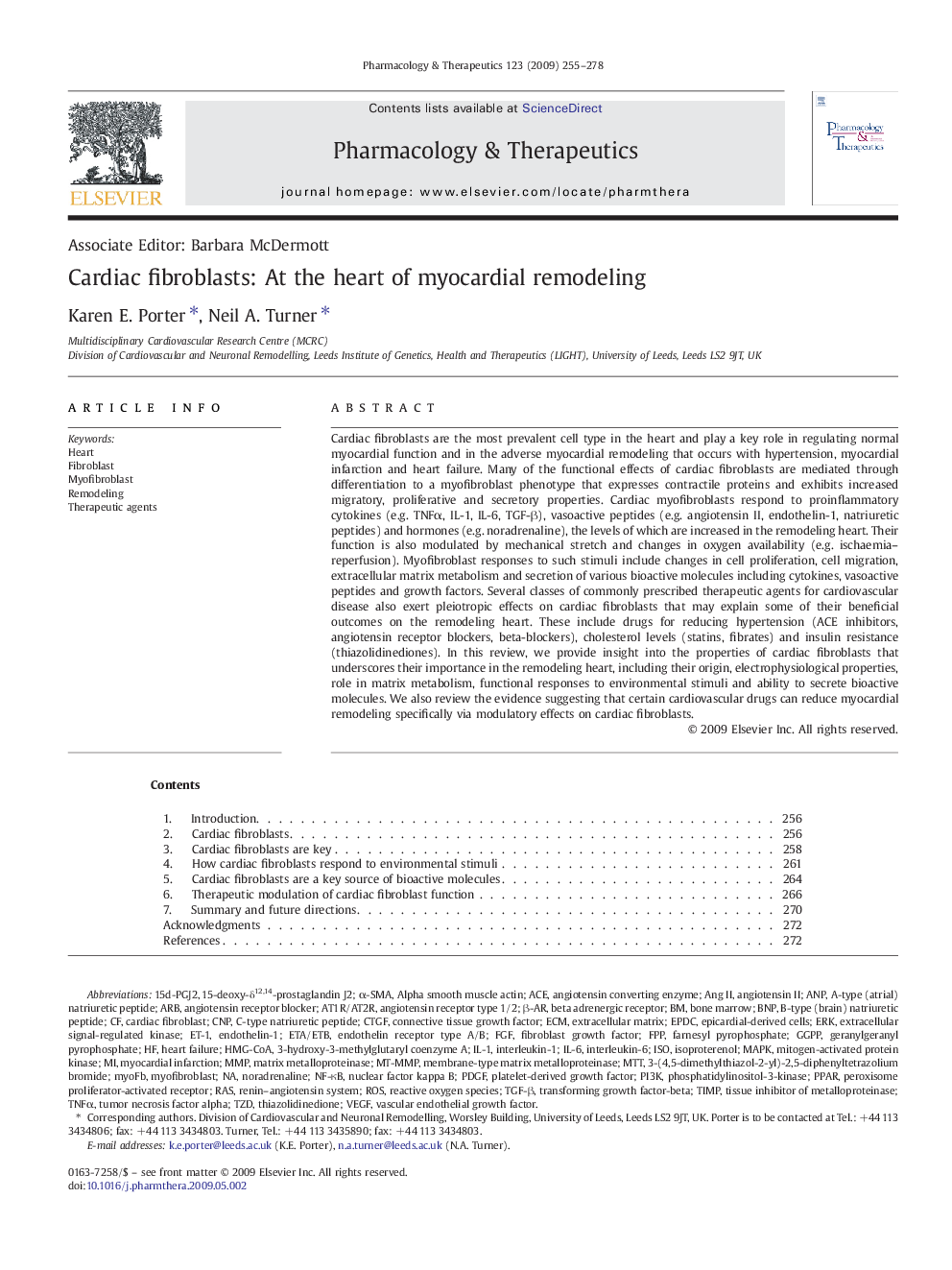| کد مقاله | کد نشریه | سال انتشار | مقاله انگلیسی | نسخه تمام متن |
|---|---|---|---|---|
| 5844134 | 1127554 | 2009 | 24 صفحه PDF | دانلود رایگان |
عنوان انگلیسی مقاله ISI
Cardiac fibroblasts: At the heart of myocardial remodeling
دانلود مقاله + سفارش ترجمه
دانلود مقاله ISI انگلیسی
رایگان برای ایرانیان
کلمات کلیدی
ECMMT-MMPGGPPHMG-CoAβ-ARBNPCNPET-115d-PGJ2ARBERKCTGFFGFACEEPDCFPPANPα-SMAMMPIL-1IL-615-deoxy-Δ12,14-Prostaglandin J2 - 15-deoxy-Δ12،14-پروستاگلاندین J23-hydroxy-3-methylglutaryl coenzyme A - 3 هیدروکسی 3-متیل گلوتاریل کوآنزیم A3-(4,5-dimethylthiazol-2-yl)-2,5-diphenyltetrazolium bromide - 3- (4،5-dimethylthiazol-2-yl) -2،5-difenyltetrazolium bromideMAPK - MAPKMTT - MTTalpha smooth muscle actin - آلفا آکتیو عضله صافangiotensin converting enzyme - آنزیم تبدیل آنژیوتانسینMyocardial infarction - آنفارکتوس میوکاردAngiotensin II - آنژیوتانسین دوendothelin-1 - اندوتلین-1ISO - ایزوisoproterenol - ایزوپروترنولinterleukin-6 - اینترلوکین ۶interleukin-1 - اینترلوکین-1Ang II - دومfarnesyl pyrophosphate - فارسیل پیرو فسفاتConnective tissue growth factor - فاکتور رشد بافت همبندfibroblast growth factor - فاکتور رشد فیبروبلاستCardiac fibroblast - فیبروبلاست قلبExtracellular matrix - ماتریکس خارج سلولیmatrix metalloproteinase - ماتریکس متالوپروتئینازmembrane-type matrix metalloproteinase - متالوپروتئیناز ماتریس غشاییAngiotensin receptor blocker - مسدود کننده گیرنده آنژیوتانسینbone marrow - مغز استخوانheart failure - نارسایی قلبیmitogen-activated protein kinase - پروتئین کیناز فعال با mitogenC-type natriuretic peptide - پپتید سدیم نوعی پتاسیمgeranylgeranyl pyrophosphate - ژرینیل گرانیل پیرو فسفاتextracellular signal-regulated kinase - کیناز تنظیم شده سیگنال خارج سلولیBeta adrenergic receptor - گیرنده بتا آدرنرژیک
موضوعات مرتبط
علوم پزشکی و سلامت
داروسازی، سم شناسی و علوم دارویی
داروشناسی
پیش نمایش صفحه اول مقاله

چکیده انگلیسی
Cardiac fibroblasts are the most prevalent cell type in the heart and play a key role in regulating normal myocardial function and in the adverse myocardial remodeling that occurs with hypertension, myocardial infarction and heart failure. Many of the functional effects of cardiac fibroblasts are mediated through differentiation to a myofibroblast phenotype that expresses contractile proteins and exhibits increased migratory, proliferative and secretory properties. Cardiac myofibroblasts respond to proinflammatory cytokines (e.g. TNFα, IL-1, IL-6, TGF-β), vasoactive peptides (e.g. angiotensin II, endothelin-1, natriuretic peptides) and hormones (e.g. noradrenaline), the levels of which are increased in the remodeling heart. Their function is also modulated by mechanical stretch and changes in oxygen availability (e.g. ischaemia-reperfusion). Myofibroblast responses to such stimuli include changes in cell proliferation, cell migration, extracellular matrix metabolism and secretion of various bioactive molecules including cytokines, vasoactive peptides and growth factors. Several classes of commonly prescribed therapeutic agents for cardiovascular disease also exert pleiotropic effects on cardiac fibroblasts that may explain some of their beneficial outcomes on the remodeling heart. These include drugs for reducing hypertension (ACE inhibitors, angiotensin receptor blockers, beta-blockers), cholesterol levels (statins, fibrates) and insulin resistance (thiazolidinediones). In this review, we provide insight into the properties of cardiac fibroblasts that underscores their importance in the remodeling heart, including their origin, electrophysiological properties, role in matrix metabolism, functional responses to environmental stimuli and ability to secrete bioactive molecules. We also review the evidence suggesting that certain cardiovascular drugs can reduce myocardial remodeling specifically via modulatory effects on cardiac fibroblasts.
ناشر
Database: Elsevier - ScienceDirect (ساینس دایرکت)
Journal: Pharmacology & Therapeutics - Volume 123, Issue 2, August 2009, Pages 255-278
Journal: Pharmacology & Therapeutics - Volume 123, Issue 2, August 2009, Pages 255-278
نویسندگان
Karen E. Porter, Neil A. Turner,